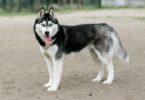Meet the Feist, a small, energetic hunting dog with a big personality. Originating in the United States, this unique breed has deep historical roots and is known for its agility and loyal companionship. Whether you’re a seasoned hunter or a pet enthusiast, the Feist is a fascinating animal that offers both versatility and charm.
In this article, we’ll explore the Feist’s history, physical characteristics, temperament, and health. You’ll learn practical tips on training, exercise, and care to help you make the most of life with your Feist. Discover how this breed thrives as both an active hunting partner and a beloved companion at home.
The Origins and History of the Feist Dog
The Feist dog’s story begins in the early days of American settlements, where they quickly became indispensable companions for hunters and families alike. Their energetic nature and versatile skills made them a favorite among those who needed a reliable partner for both work and companionship.
From Early American Settlements
Historical records show that Feist dogs were present in the United States as far back as the 18th century. These energetic canines were highly valued for their ability to hunt small game, a trait that endeared them to many settlers. Notable figures like George Washington and Teddy Roosevelt were known to appreciate the Feist’s capabilities, further cementing their place in American history.
The Feist’s origins trace back to terriers brought by British immigrants. Over time, they evolved into a distinct breed, adapting to the diverse hunting needs across the United States. Their journey from humble beginnings to beloved companions is a testament to their enduring appeal.
Evolution from Hunting Companions
Initially, Feist dogs were bred for their hunting prowess, excelling in chasing small prey like squirrels and rabbits. Their silent tracking and strong prey drive made them unique among hunting breeds. As time passed, their role expanded from solely working dogs to cherished family pets, cherished for their loyalty and affectionate nature.
The influence of prominent figures like Teddy Roosevelt, who hunted with his Feist, Skip, helped popularize the breed. This exposure highlighted the Feist’s dual role as both a skilled hunter and a loving companion, traits that remain central to their identity today.
Distinctive Physical Characteristics
The Feist is a compact yet muscular breed, designed for agility and endurance. Their build is well-suited for hunting, making them excel in challenging terrains.
Size, Build, and Coat Varieties
Feists typically stand between 10 to 18 inches tall and weigh from 15 to 30 pounds. Their size and build make them ideal for hunting small game. The Mountain Feist, a robust subtype, is known for its sturdy frame and endurance.
Their coat comes in various colors like white, black, tan, and brindle, often mixed in patterns. Most Feists have short, low-maintenance coats, perfect for active lifestyles.
Unique Features and Appearance
Feists have distinct ears—either erect, button, or short hang—and keen eyes that aid in tracking prey. Their agility and lean frame allow them to maneuver through dense environments effortlessly.
Their physical traits not only define their appearance but also enhance their hunting performance. Whether it’s their silent tracking or robust build, each feature contributes to their effectiveness in the field.
Personality, Temperament, and Family Life
Feist dogs are known for their warm and engaging personalities, making them excellent companions for active families. Their loyal, alert, and playful nature creates strong family bonds, while their adaptability ensures they thrive in various home environments.
Loyalty, Alertness, and Playfulness
Feist dogs display exceptional loyalty and alertness to their owners, often forming strong bonds with their families. Their playful nature makes them ideal for active families, as they enjoy engaging in various activities and games. This high energy level is balanced with gentle behavior at home, making them loving companions.
Adaptability in Family Settings
Despite their high energy, Feist dogs adapt well to different home environments with proper exercise. They are excellent companions and family pets, known for their ability to balance hunting excursions with gentle behavior at home. Their friendly disposition and adaptability make them a great fit for families who enjoy an active lifestyle.
Their temperament makes them as dependable and caring as they are spirited, ensuring they are a joy to have around both at home and during outdoor activities.
Health, Nutrition, and Exercise Needs
Maintaining the health of your Feist dog requires attention to diet, exercise, and regular care. These elements are crucial for their high energy levels and overall vitality.
Common Health Concerns and Preventative Care
Feist dogs are generally robust, but they can face joint issues and skin conditions due to their active lifestyle. Regular vet visits and proper grooming help prevent these problems. Ensuring your Feist gets enough exercise and a balanced diet supports their joint health and prevents obesity.
Balanced Diet and Physical Activity Tips
A high-quality dog food with adequate protein and nutrients is essential. Daily walks and play sessions are vital for managing their energy. Interactive toys can prevent boredom and destructive behavior. For more expert advice, visit our guide on pet health.
Feist dogs thrive with consistent exercise routines and a well-balanced diet, ensuring they stay healthy and active.
Training and Socialization Insights
Training your Feist dog is a rewarding experience that strengthens your bond and helps them become well-behaved companions. With their intelligence and eagerness to please, Feists thrive on positive reinforcement techniques.
Positive Reinforcement Techniques
Positive reinforcement is key to effective training. Use treats, praise, and play to encourage good behavior. For example, when teaching “sit,” hold a treat above their head and move it backward. As they sit, say “sit” and reward them. This method works well for commands like “stay” and “come.”
Building Social Skills and Bonding
Socialization is crucial. Introduce your Feist to various environments, people, and animals early. Interactive training sessions, like agility exercises, not only build skills but also deepen your bond. Consistent commands and positive reinforcement help Feists, despite their energy, respond well.
For more expert advice, visit our training guide. Remember, training is a fun journey that enhances your relationship with your Feist.
Feist Dog Versus Other Hunting and Terrier Breeds
When comparing the Feist dog to other hunting and terrier breeds, several unique characteristics stand out. These differences are particularly evident in their hunting techniques, prey drive, and overall temperament.
Distinct Hunting Techniques and Prey Drives
Feist dogs are known for their specialized hunting techniques, particularly in treeing squirrels. Unlike hound breeds, Feists are silent on the track and only bark once they’ve treed their prey. This trait makes them highly effective for hunters targeting small game like squirrels and rabbits.
Their strong prey drive sets them apart from breeds like Rat Terriers and Jack Russell Terriers. While these breeds are also energetic hunters, Feists have a more focused instinct to hunt squirrels and other small prey. This drive is deeply ingrained, making them exceptional squirrel dogs.
Comparison of Temperament and Physical Traits
Feist dogs are lighter and more agile compared to hound breeds, allowing for quicker movements in the field. Their compact build and lean frame enable them to navigate dense terrain effortlessly, a trait that is less common in other hunting breeds.
In terms of temperament, Feists are highly adaptable, thriving both as hunting companions and family pets. While breeds like Rat Terriers may exhibit more aggressive behavior, Feists are known for their loyalty and gentle nature at home. This balance makes them an excellent choice for active families.
Overall, the Feist dog’s unique combination of hunting prowess, adaptable temperament, and compact build sets them apart from other terrier and hunting breeds. Whether you’re a hunter or a family looking for an energetic companion, the Feist offers a blend of skill and affection that is hard to match.
Final Thoughts for the Active Feist Enthusiast
For those who embrace an active lifestyle, the Feist dog offers a unique blend of energy and affection. With a history rooted in American traditions, this breed has proven its versatility as both a skilled hunter and a loving companion. Their compact size, agile build, and vibrant personality make them a joy to be around, whether in the field or at home.
Maintaining a Feist dog’s well-being requires consistent exercise, a balanced diet, and proper socialization. These elements ensure a long, happy life filled with adventure and companionship. Their adaptability shines in various home environments, making them an excellent choice for families seeking an energetic yet gentle pet.
Prospective owners are encouraged to explore local shelters or reputable breeders to bring a Feist into their life. This breed’s enduring popularity in the U.S. is a testament to its timeless appeal. Embrace the active lifestyle that comes with caring for a Feist, and discover how they can enrich your life with their loyalty and enthusiasm.
FAQ
What makes the Feist dog breed unique?
The Feist dog breed is known for its exceptional hunting skills, particularly for squirrels, and its energetic yet affectionate nature. Originating in the United States, this breed combines agility, intelligence, and a strong prey drive, making it both a capable hunter and a loving companion.
How much exercise does a Feist dog need?
Feist dogs are high-energy animals that require regular and vigorous exercise. Daily activities should include long walks, playtime, and mental stimulation to keep them happy and healthy. Aim for at least 1-2 hours of exercise per day.
Are Feist dogs good family pets?
Yes, Feist dogs can make wonderful family pets. They are loyal, playful, and generally good with children. However, they do require consistent training and socialization to ensure they adapt well to family life.
How does the Feist dog compare to other hunting breeds?
Unlike some hound breeds, the Feist dog is known for its treeing ability, often driving game into trees. They are smaller in size compared to many hunting breeds but are highly energetic and focused when on the hunt.










Leave a Comment